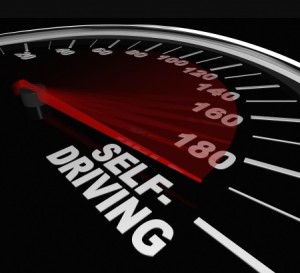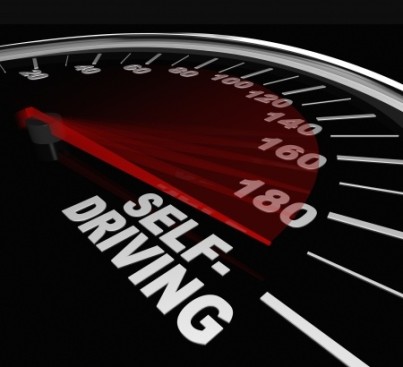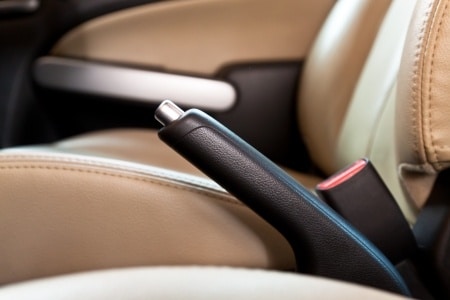Self-driving cars are safer, but would you buy one?
 With all the news stories about autonomous vehicles of the future, how will self-driving cars operate in the real world? That could be a multi-million-dollar question not just for drivers, but for all of us.
Google’s aspirations for a self-driving vehicle are high indeed. The company has set its sights on nothing less than a completely autonomous vehicle and a dramatic reduction in accidents triggered by human error.
To fully realize Google’s vision, one must conceive of a world without distracted drivers —a world in which traveling the interstate for many long hours would no longer trigger a backache or a fatal episode of falling asleep at the wheel.
On the home front, distracted teens with cellphones in hand would no longer prove a frightening specter to parents, (although listening to hours of teen talk in the back seat could prove wearisome!)
While the first driverless cars are being tested on roads today, the day where they represent a majority of cars of the road — or even a sizable minority — is still far off. Studies show that even though they are theoretically a much safer alternative than cars driven by humans, most people say they aren’t interested in purchasing one or having loved ones ride in one. That’s a huge hurdle for carmakers.
Regardless of the visions we have when thoughts turn to driverless cars, the change is coming whether we’re ready for it or not. Stay tuned!
With all the news stories about autonomous vehicles of the future, how will self-driving cars operate in the real world? That could be a multi-million-dollar question not just for drivers, but for all of us.
Google’s aspirations for a self-driving vehicle are high indeed. The company has set its sights on nothing less than a completely autonomous vehicle and a dramatic reduction in accidents triggered by human error.
To fully realize Google’s vision, one must conceive of a world without distracted drivers —a world in which traveling the interstate for many long hours would no longer trigger a backache or a fatal episode of falling asleep at the wheel.
On the home front, distracted teens with cellphones in hand would no longer prove a frightening specter to parents, (although listening to hours of teen talk in the back seat could prove wearisome!)
While the first driverless cars are being tested on roads today, the day where they represent a majority of cars of the road — or even a sizable minority — is still far off. Studies show that even though they are theoretically a much safer alternative than cars driven by humans, most people say they aren’t interested in purchasing one or having loved ones ride in one. That’s a huge hurdle for carmakers.
Regardless of the visions we have when thoughts turn to driverless cars, the change is coming whether we’re ready for it or not. Stay tuned!
 With all the news stories about autonomous vehicles of the future, how will self-driving cars operate in the real world? That could be a multi-million-dollar question not just for drivers, but for all of us.
Google’s aspirations for a self-driving vehicle are high indeed. The company has set its sights on nothing less than a completely autonomous vehicle and a dramatic reduction in accidents triggered by human error.
To fully realize Google’s vision, one must conceive of a world without distracted drivers —a world in which traveling the interstate for many long hours would no longer trigger a backache or a fatal episode of falling asleep at the wheel.
On the home front, distracted teens with cellphones in hand would no longer prove a frightening specter to parents, (although listening to hours of teen talk in the back seat could prove wearisome!)
While the first driverless cars are being tested on roads today, the day where they represent a majority of cars of the road — or even a sizable minority — is still far off. Studies show that even though they are theoretically a much safer alternative than cars driven by humans, most people say they aren’t interested in purchasing one or having loved ones ride in one. That’s a huge hurdle for carmakers.
Regardless of the visions we have when thoughts turn to driverless cars, the change is coming whether we’re ready for it or not. Stay tuned!
With all the news stories about autonomous vehicles of the future, how will self-driving cars operate in the real world? That could be a multi-million-dollar question not just for drivers, but for all of us.
Google’s aspirations for a self-driving vehicle are high indeed. The company has set its sights on nothing less than a completely autonomous vehicle and a dramatic reduction in accidents triggered by human error.
To fully realize Google’s vision, one must conceive of a world without distracted drivers —a world in which traveling the interstate for many long hours would no longer trigger a backache or a fatal episode of falling asleep at the wheel.
On the home front, distracted teens with cellphones in hand would no longer prove a frightening specter to parents, (although listening to hours of teen talk in the back seat could prove wearisome!)
While the first driverless cars are being tested on roads today, the day where they represent a majority of cars of the road — or even a sizable minority — is still far off. Studies show that even though they are theoretically a much safer alternative than cars driven by humans, most people say they aren’t interested in purchasing one or having loved ones ride in one. That’s a huge hurdle for carmakers.
Regardless of the visions we have when thoughts turn to driverless cars, the change is coming whether we’re ready for it or not. Stay tuned! 
 With all the news stories about autonomous vehicles of the future, how will self-driving cars operate in the real world? That could be a multi-million-dollar question not just for drivers, but for all of us.
Google’s aspirations for a self-driving vehicle are high indeed. The company has set its sights on nothing less than a completely autonomous vehicle and a dramatic reduction in accidents triggered by human error.
To fully realize Google’s vision, one must conceive of a world without distracted drivers —a world in which traveling the interstate for many long hours would no longer trigger a backache or a fatal episode of falling asleep at the wheel.
On the home front, distracted teens with cellphones in hand would no longer prove a frightening specter to parents, (although listening to hours of teen talk in the back seat could prove wearisome!)
While the first driverless cars are being tested on roads today, the day where they represent a majority of cars of the road — or even a sizable minority — is still far off. Studies show that even though they are theoretically a much safer alternative than cars driven by humans, most people say they aren’t interested in purchasing one or having loved ones ride in one. That’s a huge hurdle for carmakers.
Regardless of the visions we have when thoughts turn to driverless cars, the change is coming whether we’re ready for it or not. Stay tuned!
With all the news stories about autonomous vehicles of the future, how will self-driving cars operate in the real world? That could be a multi-million-dollar question not just for drivers, but for all of us.
Google’s aspirations for a self-driving vehicle are high indeed. The company has set its sights on nothing less than a completely autonomous vehicle and a dramatic reduction in accidents triggered by human error.
To fully realize Google’s vision, one must conceive of a world without distracted drivers —a world in which traveling the interstate for many long hours would no longer trigger a backache or a fatal episode of falling asleep at the wheel.
On the home front, distracted teens with cellphones in hand would no longer prove a frightening specter to parents, (although listening to hours of teen talk in the back seat could prove wearisome!)
While the first driverless cars are being tested on roads today, the day where they represent a majority of cars of the road — or even a sizable minority — is still far off. Studies show that even though they are theoretically a much safer alternative than cars driven by humans, most people say they aren’t interested in purchasing one or having loved ones ride in one. That’s a huge hurdle for carmakers.
Regardless of the visions we have when thoughts turn to driverless cars, the change is coming whether we’re ready for it or not. Stay tuned! 

